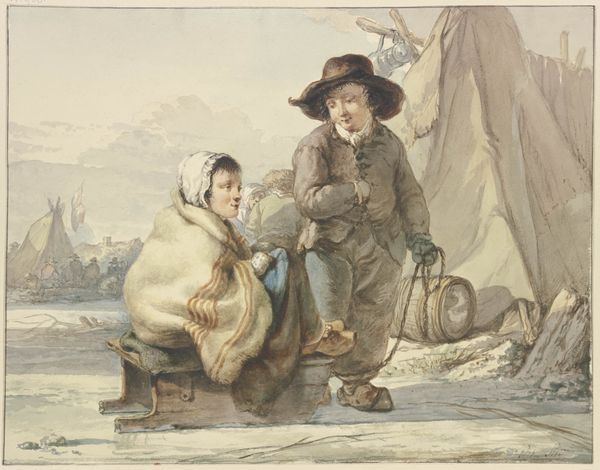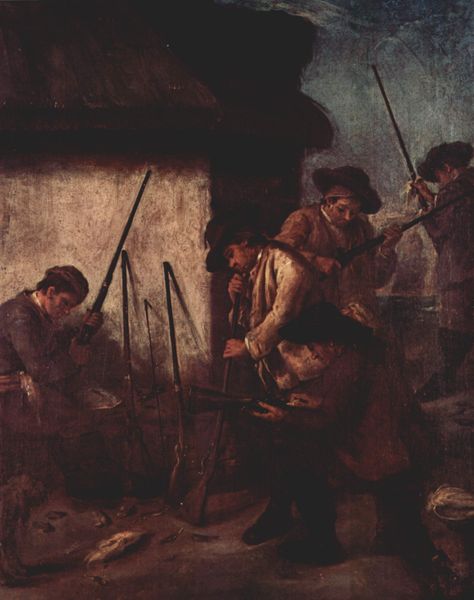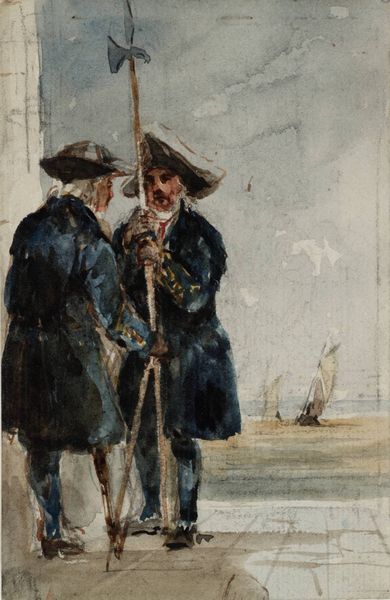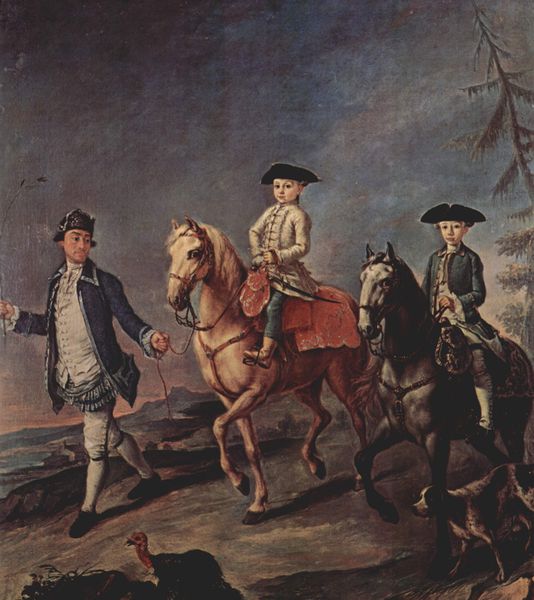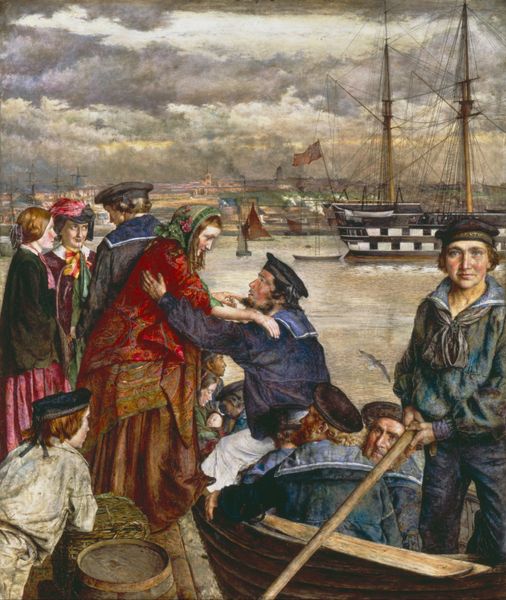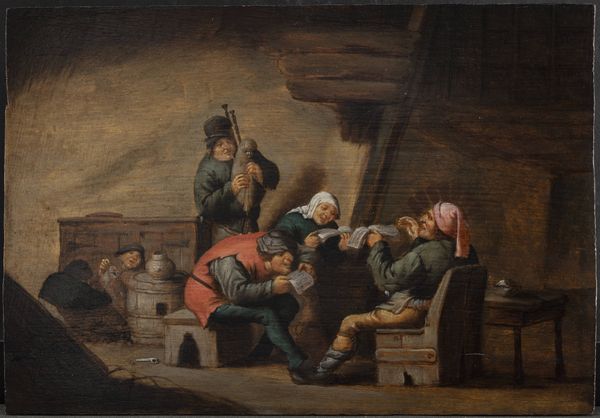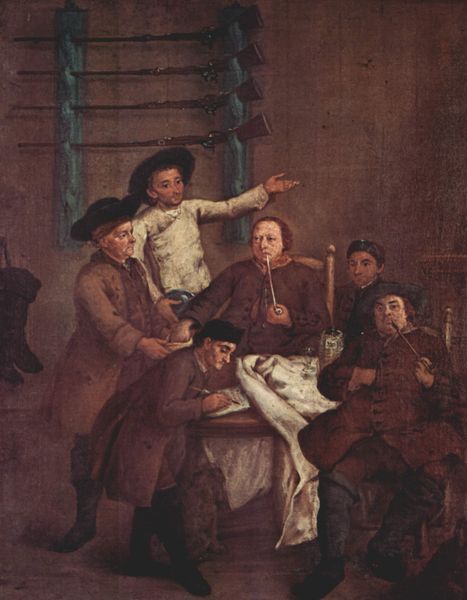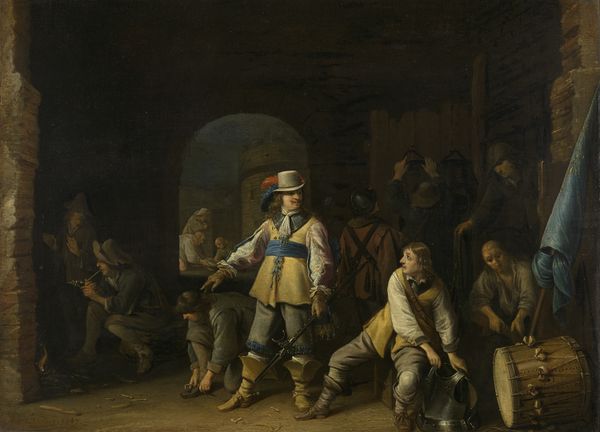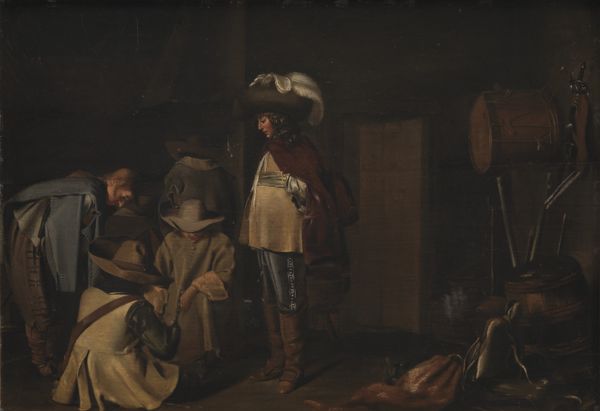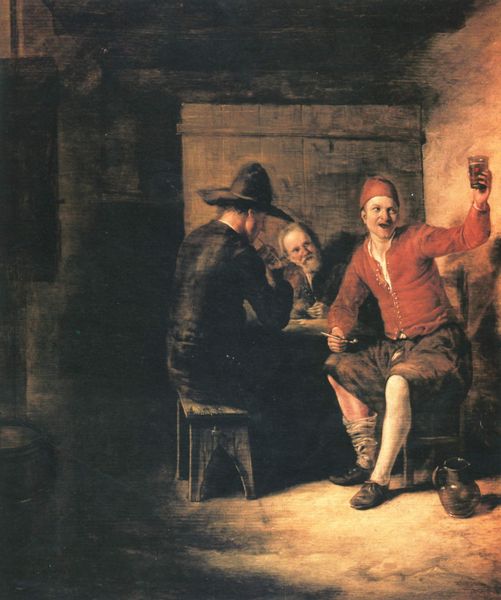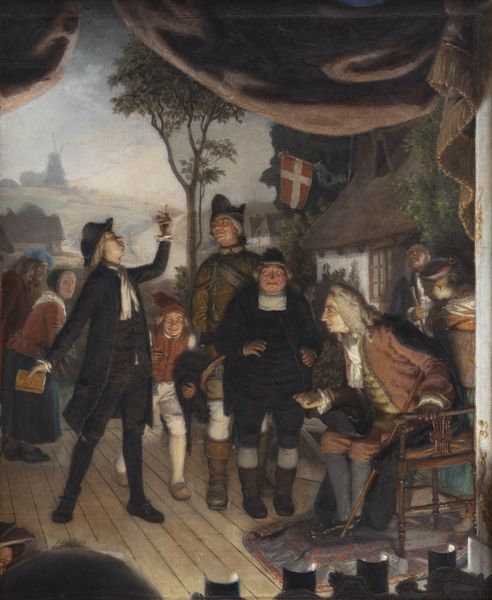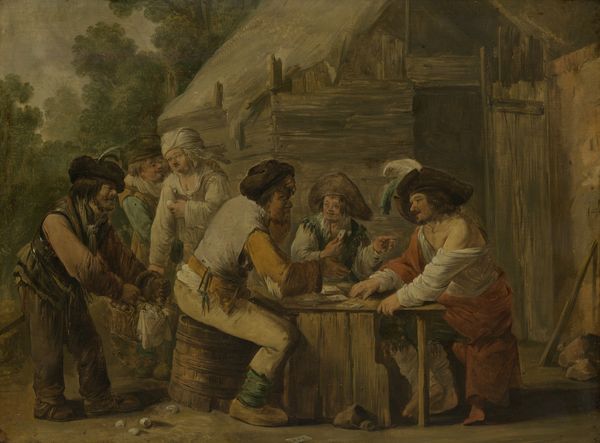
Dimensions: 50 x 61 cm
Copyright: Public domain
Curator: Before us, we have Pietro Longhi's 1770 oil painting, "The Awakening for Hunting," currently residing in the Querini Stampalia Foundation in Venice. Editor: My immediate reaction is a somber feeling. The subdued palette and figures seem burdened by something unspoken. Is it just the pre-dawn chill, or is there more at play? Curator: Longhi excelled at capturing the nuances of Venetian society. What may read to us now as a quiet, subdued moment was often a scene rich with the socio-political expectations of its time. Genre paintings like this allow us glimpses into daily life. Editor: Right. Looking closer, I’m curious about the dog—or, perhaps, two dogs—chained in the dark foreground. Are they representative of subjugation, highlighting social dynamics and inequalities? The stance of the central figure, pointing toward the boat, almost directs our attention *away* from this uncomfortable truth. Curator: Interesting point. Indeed, we see here that hunting was an aristocratic pursuit, one often celebrated. The work could be about status and performance, but I find that it can also provide critical reflection of how these things rely upon structures that subjugate the less fortunate. Editor: Precisely. The other figures, almost obscured, are likely servants or workers facilitating this 'leisure'. It isn't a celebratory scene so much as a visual study of power. It quietly indicts the systems that privilege some at the expense of others. Curator: I agree, by depicting this hunt Longhi might be quietly interrogating that hierarchy, encouraging us to consider whose labor enables these 'awakened' pastimes. He frames it as a transaction and a structured power relation rather than simply 'men out on the water to hunt'. Editor: Thank you for pointing that out; I was seeing this transaction, but could not describe what I was feeling beyond my gut response, the sense of dis-ease, now contextualized historically, as both social and aesthetic critique. Curator: Yes, it is this combination that is both what attracted people and perhaps offended those who it affected within its time. Editor: Indeed, understanding those relationships is crucial for engaging critically with works like these, moving beyond simple aesthetics into the difficult, complicated socio-political reality it represents.
Comments
No comments
Be the first to comment and join the conversation on the ultimate creative platform.
